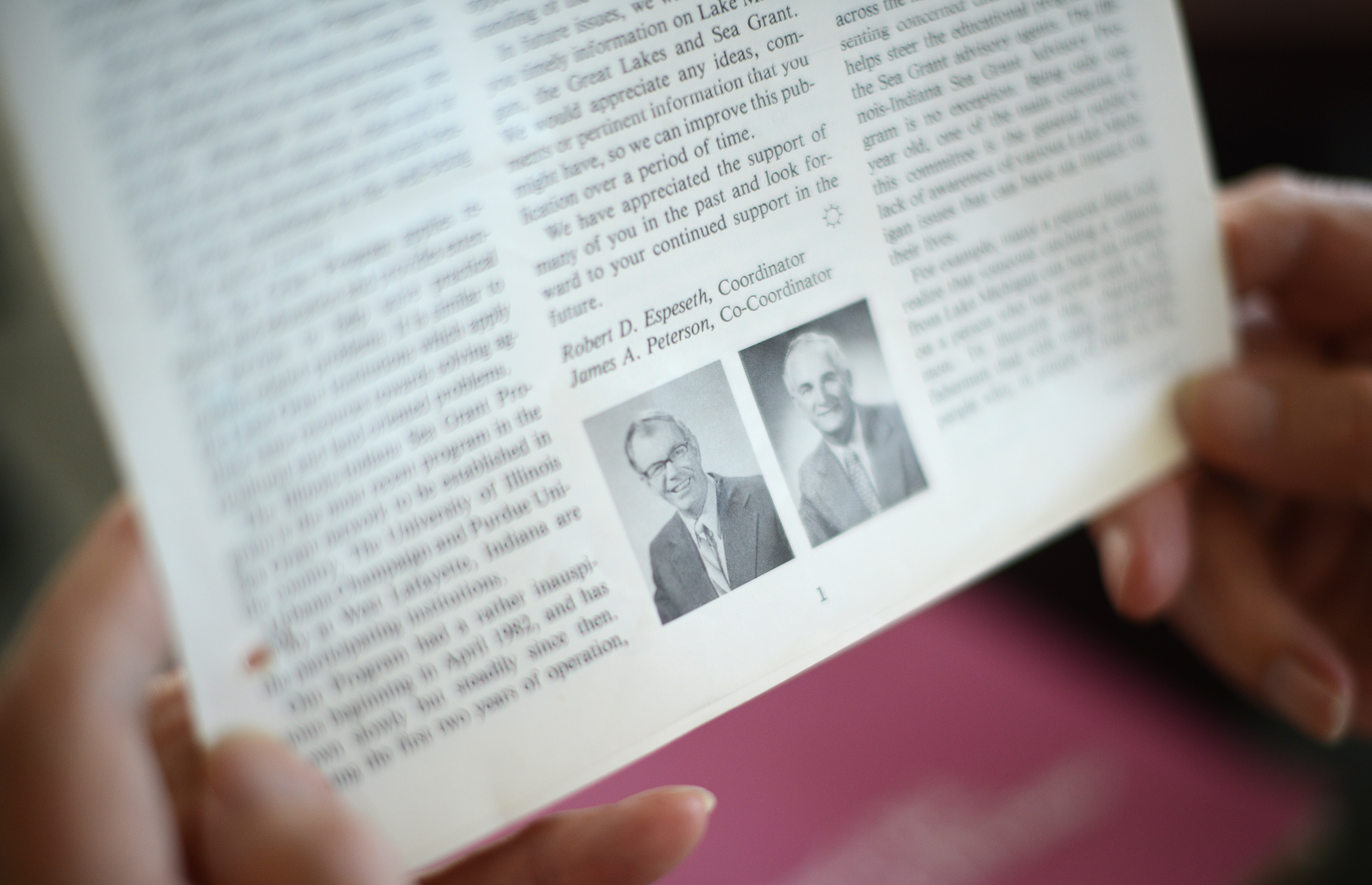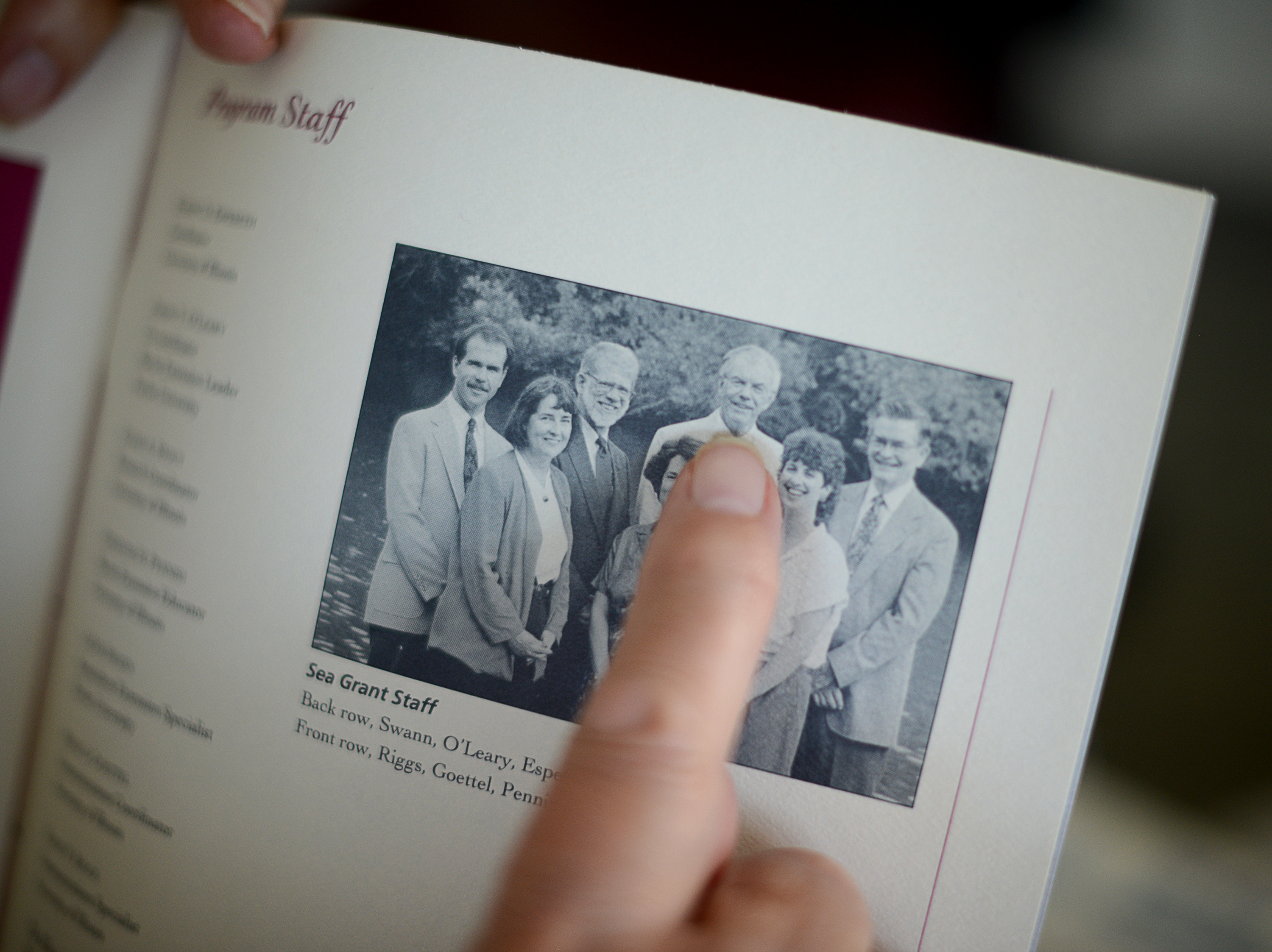
The National Sea Grant Program is celebrating its 50th anniversary this year and Illinois-Indiana Sea Grant (IISG) is looking back at its own origins through the eyes of its first leader.
In 1982, IISG had its modest beginnings as a small marine extension project, through a partnership of the University of Illinois, Purdue University, and the National Oceanic and Atmospheric Administration.
Robert Espeseth was at the helm from 1982 through 1994. Now a retired University of Illinois professor of leisure studies, he recalled those early years as both part happenstance and part destiny.
Like a star football quarterback recalling his glory days, he shared the play-by-play of the creation of IISG.
“Jim Peterson, who had a joint appointment with Purdue and Indiana, and I were up there at a Great Lakes regional workshop for recreation specialists in 1980,” Espeseth recalled. “And one of the fellows from Michigan was getting funding out of Michigan Sea Grant, and he said, ‘Have you guys ever looked into that?’ And we said, ‘What is it?’ And he said, ‘With Illinois and Indiana not being in the program they’re anxious to complete the Great Lakes for programs covering all the shoreline.’”

And with that exchange, the pursuit to “cover the shoreline” began.
Peterson and Espeseth were both going to be in Washington, so they decided to pay a visit the National Sea Grant Office in Silver Spring, Maryland.
They arrived without an appointment, but Espeseth wasn’t going to leave without meeting the director, and he had the perfect in.
It just so happened that the National Sea Grant Program director, the late Ned Ostenso, was a coxswain in the boat Espeseth rowed during his days at the University of Wisconsin.
“’He’s really busy, he wouldn’t have time,’” Espeseth recalled being told.
“I said, ‘Just call him and tell him Bob Espeseth is here.’ So he did and Ned said, ‘Bring him on up!’”
Ostesno encouraged Espeseth and Peterson and explained how anxious he was to get Illinois and Indiana onboard, but he warned that it would be a long process.

How right he was.
Their first application in 1981 was turned down for not having a strong research component and because the two universities, Purdue and Illinois, weren’t very supportive of the Sea Grant mission. It wasn’t until 1982 that IISG finally got approved as a marine extension project.
Yet, there was still some uncertainty about the focus and direction of the program.
Initially the emphasis was on aquaculture, recreation and shoreline tourism—topics that were not as popular with other Sea Grants. IISG really took off once it added more research-focused areas like invasive species, water quality and pollutants.
The outreach staff grew from a single specialist to a team of over 20, located at universities and agencies in the two states. In 1997, IISG was awarded College Program status by the U.S. Department of Commerce.
Espeseth smiled as he thought back to those early days.
“I just talked to Jim Peterson the other day and he said laughing, ‘Yeah, that was really a shot in the dark!’ But at the behest of our compatriot up there in Michigan, that’s how it got started.”

